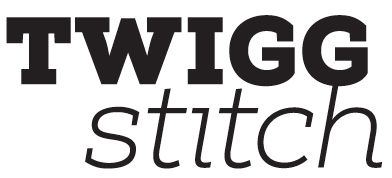A New Twist on Reversible Knitting
Vicki Twigg

CONTENTS
Introduction
A Technique is Born
I love to play around with unusual craft techniques, and Im always on the lookout for interesting ones. Sometimes they find their way into the things that Im making; sometimes they get filed away for another day, increasing the pile of remarkable samples in my box of ideas. Occasionally, my ideas cross-pollinate and team up with each other, sparking my imagination and sending me in a new direction of frenzied knitting or crochet or quiltingmy family is accustomed to losing me to one of them every so often.

The inspiration for this particular stitch pattern happened in the fall of 2011. Looking at the structure of two-color rib, a technique in which the knit and purl stitches are different colors, set my mind working. I love the way the rib creates stripes that can be as dramatic or subtle as you want, and although its not as stretchy as a regular rib, it makes a wonderful edging for various knitted projects. The only drawback I could see was that such two-color ribs look good on only one side because the color not in use is stranded behind the other stitches in the same way as unused yarns are stranded behind Fair Isle patterns.
I challenged myself to see if such ribs could be double-sided so that both front and back were equally beautiful. Having experimented over many years with various ways to use multiple yarns, I naturally began with a process similar to double knitting. In my efforts to make a single integrated fabric, I twisted the yarns around each other with every stitch. Although it felt as though I were holding the yarns the wrong way, I continued and discovered what I was looking fora two-sided rib fabric that was a different color on each side. I havent found this technique anywhere in the literature, so Ive named it Twigg stitch.
Basic Twigg stitch produces a two-color rib in which each side is a different color. It looks much the same as two-color brioche, but both colors are worked on every row and there are no slipped stitches or yarnovers. And, unlike double knitting, it produces a single fabric layer. The basics are fairly easy to learn and, once grasped, the possibilities are immense. After discovering Twigg stitch, I began endless experiments (which are still ongoing) to explore the limits of this two-color technique. It turns out that it can be applied in a variety of ways to other techniques, including cables, lace, colorwork, entrelac, and other texture patterns.
Twigg stitch uses familiar knitting skills and is easily learned by even novice knitters. It can be worked in the English (throwing) style as well as the Continental (picking) style of knitting, or by holding one yarn in each hand. Success lies largely in how the yarns are held and controlledthe key is in keeping them balanced and in the right relationship to each other.
Twigg Stitch isnt intended to be a how-to-knit bookmany good resources are already available for those wanting to start knitting. I assume a basic knowledge of knitting and knitting terms, but at the same time, Ive taken care to make the patterns accessible to knitters of all levels.
I hope youll become as fascinated with the technique as I am, and that youll find ways to use Twigg stitch in your own designs.
 Materials
MaterialsAs for any other knitting technique, the yarn and tools you choose will influence your success with Twigg stitch. The materials outlined in this chapter will facilitate your progress and ensure the best results.
Yarn
So many yarns are available to knitters now that the choices can be bewildering. The yarns that I used for each pattern have specific qualities that enhance the design. I tend to use relatively lightweight yarns for Twigg stitch because the two-strand nature of the stitch creates a fabric thats a little thicker. In many cases, another yarn of the same weight can be substituted quite successfully. But its important to realize that the type of fiber used and how a yarn is constructed can have dramatic effects. Youll only know if a substitute is appropriate by knitting a sample swatch. I encourage you to experiment with various types of yarns to see how they behave in different projects and determine which you like best.
Keep in mind that texture can affect the overall look of Twigg stitch. For the most part, slipperier yarns will produce the most uniform fabric because they settle into the stitches. Clingy yarns may require a bit of adjustmentsimply pulling on the fabric widthwise and lengthwise may do the trick. But if it doesnt, you might need to use a needle tip to adjust the stitches for a uniform look.
Although Ive used different colors of the same yarn for each of the projects in this book, you can get interesting results by pairing different yarns. For the most even fabric, choose two yarns of similar thickness. However, you also can get pleasing results if one yarn is slightly thicker than the other or if you pair a smooth yarn with a slightly nubby oneprovided you can achieve balanced stitches.
On a more practical note, you may want to pair an expensive specialty yarn with a cheaper plain one to cut costs while maintaining luxury. For example, you can use a yarn that contains sequins or beads for the right side and a plain yarn for the wrong side. Working the lining with a complementary yarn will keep all the finery on the outside and provide a visual surprise when the inside is visible. In addition, consider pairing yarns made from different fibers to take advantage of the characteristics of each. For example, wool will add stability and resilience to silk or alpaca; cotton will add next-to-the-skin softness to a scratchier yarn.
Color













 Materials
Materials